Joint Compound vs. Spackle: The Difference & When to Use Each
Author: Omar Alonso | Editor: Omar Alonso
Review & Research: Jen Worst & Chris Miller
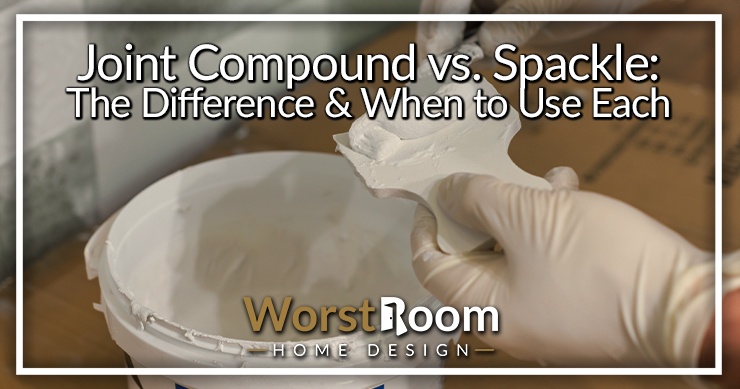
When it comes to home improvement projects and wall repairs, the age-old debate of joint compound vs. spackle often arises. These two materials are essential for drywall repair, but understanding their differences is crucial in making the right choice for your needs.
Let's delve into the world of joint compound and spackle by comparing their composition, primary uses, durability, application process, and more. By uncovering the distinctions between these two popular wall repair materials, you'll be better equipped to tackle your next DIY project easily and confidently.
Understanding Joint Compound & Spackle
Is joint compound the same as spackle? No. Joint compound and spackle are two commonly used materials for working with drywall; joint compound is made for large-scale wall projects, while spackle is designed for small repairs.
Composition & Texture Differences
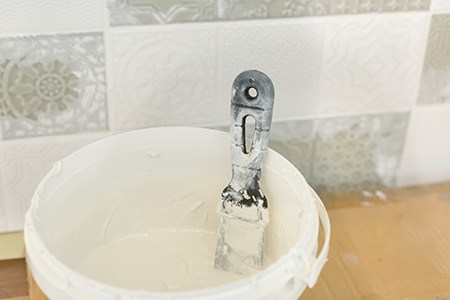
One of the key distinctions between joint compound and spackle lies in their composition and texture. Joint compound, commonly used for larger-scale wall projects, consists of a combination of gypsum and limestone.
This creates a thinner consistency that requires multiple coats to achieve proper coverage due to its higher shrinkage when dried. On the other hand, spackle is formulated with gypsum as well but includes additional binding agents that provide a thicker consistency ideal for smaller repairs.
These textural differences between joint compound and spackle can impact how you approach your drywall repair projects. For example, if you're working on smoothing out seams between adjacent drywall sheets during an installation, the more manageable spreadability and superior bonding capabilities offered by joint compound may be better suited for this task.
Primary Use Cases
Understanding the primary use cases for joint compound vs. spackle is crucial in determining which product best suits your wall repair needs.
Joint compound is designed for larger-scale projects such as installing new drywall, repairing significant damage to plaster walls, or creating modern drywall textures. For example, it's commonly used to smooth out dents and fill holes of varying sizes that can occur during construction or due to normal wear and tear.
On the other hand, spackle excels in smaller repairs like filling nail holes or addressing minor dings and dents on your walls or creating ceiling textures. A key advantage of using spackle over joint compound for such tasks is its faster drying time, making it ideal for quick touch-ups before painting.
Durability & Strength
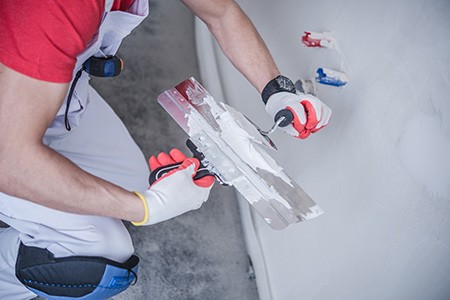
Durability and strength are key factors to consider when deciding between joint compound and spackle for wall repair projects. Joint compound, made from a combination of gypsum and limestone, offers greater durability due to its ability to endure stress over time without cracking or crumbling.
On the other hand, spackle is composed of gypsum and binding agents that provide good strength but with less pressure resistance than joint compound. However, this still makes it suitable for filling nail holes, dings, dents, or small damaged wall areas.
Furthermore, spackle's low shrinkage rate reduces the risk of cracks reappearing after application—ensuring a smooth finish once sanded down. Spackle tends to dry a bit quicker because you want joint compound to really cure before you work on it as it's for less superficial repairs.
When To Use Joint Compound vs. Spackle
Is spackling the same as joint compound? No, again. When it comes to small repairs or touch-ups, spackle is the best choice, while joint compound should be used for larger hole or crack repairs, taping, and finishing joints. That's a key understanding between spackle vs. joint compound.
Small Repairs & Touch-ups
Spackle is the best choice for small wall repairs, such as filling in dings and dents, nail holes, or any small damaged areas on walls. Spackle has a thicker consistency, allowing easy application with a putty knife or finger.
It is also not prone to shrinking when it dries, so you won't need to apply several coats. On the other hand, joint compound may not be suitable for smaller touch-ups as it comes in larger quantities and requires more preparation time than spackle.
Large Hole or Crack Repairs
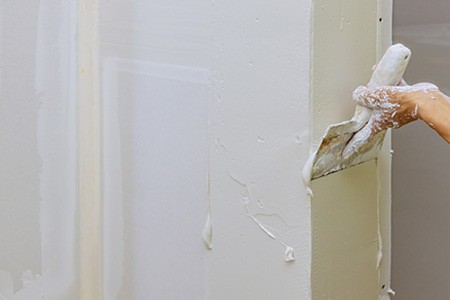
If you have a significant hole or a crack in your ceiling drywall, joint compound is the way to go. Joint compound is perfect for these repairs because it has a thicker consistency and higher strength than spackle, making it easier to fill in and cover larger areas.
It's also ideal for taping and finishing joints between sheets of drywall, which helps hide any gaps or seams. However, joint compound can be more challenging to work with than spackle since it requires more preparation time and may need multiple coats to achieve a smooth finish.
Taping & Finishing Joints
Taping and finishing joints is essential to using joint compound when installing drywall. Taping ensures that the seams between drywall sheets are smooth while finishing helps create a seamless surface.
For taping, apply a thin layer of joint compound over the seam and make sure to lay down drywall tape before adding another layer of joint compound. The process takes time, as it's important to let each coat dry before adding another layer.
If you're unsure whether to use spackle or joint compound for your project, it's best to consider what type of damage needs repairing first. Joint compound works well for new wall installations or larger-scale repairs such as deep cracks or holes, while spackle is ideal for smaller issues such as nail holes or dings.
Pros & Cons of Joint Compound vs. Spackle
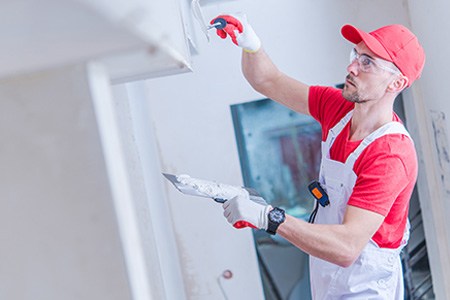
Joint compound is versatile, compatible with various materials, and easy to sand, but it can be tricky to apply due to its thin consistency, long drying time, and high shrinkage. This is what drywall mud is when you hear that term.
Spackle, on the other hand, is user-friendly, quick-drying, and has low shrinkage when dry but may not have the same durability as joint compound. These are the key difference between spackling and joint compound.
Ease of Use & Application
Both joint compound and spackle are relatively easy to apply, although their consistency differs. Spackle is typically thicker and smoother than joint compound, which makes it easier to use and ideal for small wall repairs such as nail holes or cracks.
Another factor that affects ease of use is drying time. Joint compound takes longer to dry than spackle because of its higher shrinkage rate when dry. This means you may have to wait several hours or overnight before sanding it down or painting over it.
Ultimately, choosing between joint compound and spackle comes down to the specific needs of your project. For larger wall projects like new drywall installations or serious damage repairs, joint compound is ideal due to its durability and strength.
Versatility & Compatibility
When it comes to versatility and compatibility, joint compound and spackle have their own strengths. Joint compound is versatile in the sense that it can be used for both taping and finishing drywall joints, as well as covering larger areas on walls.
This makes it perfect for new drywall installation or big wall repair projects.
On the other hand, spackle is more versatile when it comes to compatibility with different surfaces such as wood, plaster, or metal. Some types of spackling compounds are even suitable for outdoor use, making them perfect for repairing small damages to exterior surfaces like fences and siding.
While spackle may not be ideal for large area coverage, its ease of use and quick drying time make it an excellent solution for filling in dings, dents, or nail holes on indoor walls without having to sand down a large area around the affected spot.
Application Process, Drying Time, & Sanding
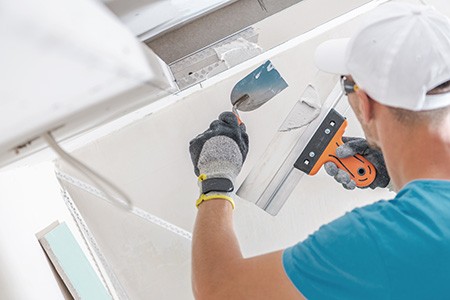
When it comes to working with joint compound and spackle, the application process, drying time, and sanding are crucial steps in achieving a smooth and flawless wall finish.
Joint compound has a thinner consistency compared to spackle, making it harder to apply but ideal for taping and finishing joints or large-scale wall projects.
After applying joint compound or spackle onto the wall's surface, it takes about 24 hours before they can be sanded down or painted over. It's essential to allow enough time for them to dry completely; otherwise, sanding too early can cause cracking or tearing of the material.
That’s the Joint Compound vs. Spackle Info Drop
In conclusion, knowing the differences between joint compound and spackle is crucial for any DIY drywall repair project. While joint compound may be more durable and suited for larger repairs, spackle's ease of use and quick drying make it perfect for minor touch-ups.
Consider your needs carefully when deciding which to use between joint compound vs. spackle, but remember that both have their place in any home improvement project.



